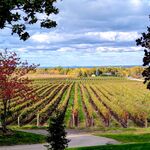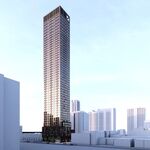Think about it, though. Front Street has way more on it than Queen. The Front-Railway alignment directly serves the West Don Lands, the East Bayfront--both rapidly developing areas that would do well to have transit in place as they are built--the central waterfront, the ACC, the SkyDome, Metro Hall, at least all of the financial district south of King, Union Station, CN Tower, the Convention Centre, Cityplace, and an assortment of other offices and condos. A Queen alignment would be useless to the rapidly-developing waterfront and wouldn't be useful for workers in the bottom end of the financial district (BCE Place, Royal Bank Plaza, arguably TD Centre and Commerce Court). Its connections to the PATH are also much weaker than a Front Street alignment. Think about what's actually on Queen Street: the Eaton Centre, City Hall, and the Sheraton. That's where the biggest problem with Queen comes in. The street both west and east of the immediate downtown core is a low-density commercial and residential neighbourhood that is a jewel for our city. Subway stations undoubtedly spark major redevelopment. I wouldn't want to see a subway stations along Queen sparkign the demolition of much of the Queen West strip for condo towers. The area is also really not particularly densely populated. The Front/Railway alignment passes through an area that is either already developed at very high density or well suited to high-density development.
Both of them have their advantages, but I think the combination of service area and relative economy make Front Street clearly superior.




